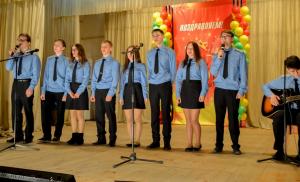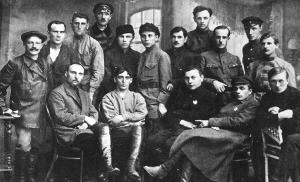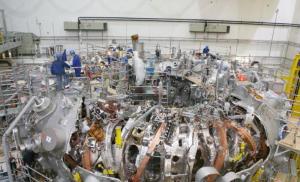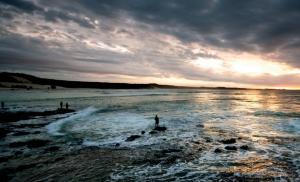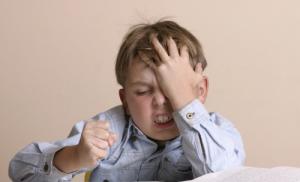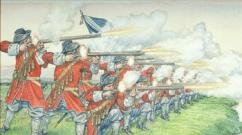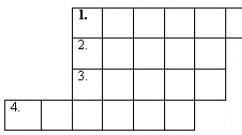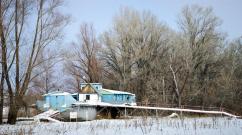Презентация на тему "Great Britain". Презентация на тему "The United Kingdom of Great Britain" Просмотр содержимого документа «Презентация на тему "Great Britain"»
Great Britain on the map Capital: London Population:59,5 mln. Square: square km Cash: English pound Language: English
POPULATION Population grew thanks to urbanization and Industrialization. During the first half of the 18th century, the population of Great Britain increased on about 15 percent. Between 1751 and 1801, the year of the first official census, the number rose from one-half to 16 million, and between 1801 and 1851, the population grew more than two- thirds to 27 million.

Lakes… There are many rivers in Britain. They are not long but some of them are deep. The longest river is the Severn. There are many lakes in Scotland. The most beautiful is Loch Lomond. There are many mountains in the north of England and in Scotland but they are not very high. The highest mountain in Great Britain is Ben Nevis.


London is the capital of Great Britain London is the capital of the UK. It was founded by the Romans in the 1st century AD. In the 11-th century it became the capital of England. In 1215 its citizens won the right to elect their Lord Major. The town experienced tremendous growth in trade and population during the late 16th and early 17th centuries. London is the capital of the UK. It was founded by the Romans in the 1st century AD. In the 11-th century it became the capital of England. In 1215 its citizens won the right to elect their Lord Major. The town experienced tremendous growth in trade and population during the late 16th and early 17th centuries.


Economy Great Britain is a highly developed industrial country. It lives by manufacture and trade. Its agriculture provides only half the food it needs, the other half of its food has to be imported. Britain is one of the most highly industrialized countries in the world: every person is employed in agriculture, eleven are employed in mining, manufacturing and building. The main branches of British economy are engineering, mining, ship-building, motor vehicle manufacturing, textile, chemistry, electronics, fishing and food processing. The industrial centres of Great Britain are London, Manchester, Eirmingham, Leeds, Liverpool, Sheffield and others.

POLITICAL SYSTEM OF GREAT BRITAIN As to its political system it is a constitutional monarchy. The power of the Queen (now Elizabeth II) is limited by Parliament which includes two Houses the House of Commons and the House of Lords. The Prime Minister is usually the head of the party which is in power. There are the following parties there: the Conservative Party, the Labour Party and the Liberal Party.




Stonehenge About 4,600 years ago – or maybe more – the Stone Age inhabitants of Britain started building an enormous stone structure. This structure is now called Stonehenge, and it is near Salisbury, in the South of England. The largest of the Stonehenge stones weigh 50 tons, and the smallest weight 5 tons. The people who started Stonehenge were primitive. They used no metal and their tools were made only of stone, bone and wood. Those primitive people usually spent all day, from sunrise to sunset, hunting, fishing and growing crops. They started to build Stonehenge in about 1,000 B. C. and finished it 600 years later. Thousands of men and women took part in building it.

Picadilly Circus It is difficult to say what"s the real centre of London, but many people choose Piccadilly circus. It is called a circus because it is round, not square like many others places. This is because it is not only central but also the heart of London"s world. Within a few hundred yards of it we find most of London"s best- know theatres and cinemas and most famous restaurants. Piccadilly Circus at night is a colorful sight.

The Houses of Parliament. The Houses of Parliament in London, known also as the Palace of Westminster, is the place where members of Parliament gather to make laws. The Palace of Westminster stands on the riverside near Westminster Abbey. Tourists always go to see them.


Saint Paul"s Cathedral Saint Paul"s Cathedral was designed in a classical Baroque style by Sir Christopher Wren. It was constructed between 1675 and Many famous persons are buried in the Cathedral. Trafalgar Square was named for Lord Nelson"s naval victory in the Battle of Trafalgar. In the centre of the square is Nelson"s Column that includes his high statue. At the corners of the column are four sculptured lions. Trafalgar Square is the site of the National Gallery. Traditionally political meetings are held here. Each December a large Christmas tree sent from Norway is erected in Trafalgar Square.

National Gallery Today the picture galleries of the National Gallery exhibits it works of all the European schools of painting which existed between the 13th and 19th centuries. The most famous works among them are "Venus and Cupid" by Diego Velazquez, "Adoration of the Shepherds" by Nicolas Poussin, "A Woman Bathing" by Harmensz van Rijn Rembrandt, "Lord Heathfield" by Joshua Reynolds and many others.

BIG BEN It was under construction within several centuries since 1042, - then the first palace for king Edward- confessor has been incorporated. The modern shape has got Parliament in , when the well-known building in new gothical style with a 97-meter Hour tower (Clock Tower) on which places a bell Big Ben, and a 102-meter powerful tower of Victoria has been erected






- воспитать познавательный интерес к стране изучаемого языка.
Оснащение :
- картинки с достопримечательностями Лондона;
- карточки с планом в виде вопросов.
Ход урока
1. Организационный этап .
Teacher (T.): Good morning boys and girls, I’m glad to see you, sit down, please.
Today we continue discussing the topic: “Great Britain”. By the way, what language do we study?
Class: We study English.
T.: Do you want to visit an English-speaking country?
T.: Today we’ll visit Great Britain. You will listen to the text about different interesting places to visit in London.
2. Речевая зарядка .
T.: But first, let’s revise the material we’ve learned before. What do you remember about Great Britain?
T.: 1) Do you remember where is Great Britain situated?
Pupil 1: It is situated on the British Isles, lying to the north-west of the continent of Europe.
T.: 2) What languages do people speak?
Pupil 2: English, Welsh and Gaelic.
T.: 3) What is the deepest river?
Pupil 3: The Thames.
T.: 4) What part is mountainous?
Pupil 4: Scotland.
T.: 5) What is the population?
Pupil 5: The population is over 57,1 million people.
T.: 6) What parts does Great Britain consist of?
Pupil 6: It consists of Scotland, Wales, England and Northern Ireland.
T.: 7) What is the capital of the country?
Pupil 7: The capital of the country is London.
T.: Yes, you are quite right. There are a lot of sights in London, isn’t it?
T.: Today we’ll visit some of them. I hope you’ll like our trip.
3. Фонетическая зарядка .
T.: Look at the blackboard. Listen to me, I’ll read the words.
[ Q] - St. Paul’s Cathedral
[^] - The Tower of London
- Westminster Abbey
- The Houses of Parliament
Trafalgar Square
T.: Now, listen to me and repeat after me.
T.: Let’s read the words one by one. Pupil 1 start, please.
4. Введение нового материала.
5. Тренировка нового материала (осуществлено на предыдущих уроках).
6. Активизация материала в различных видах речевой деятельности (в аудировании и говорении).
Предтекстовой этап :
Вводное слово : T.: So, you know already that there are a lot of sights in London. Now I’m going to tell you about some of them.
Снятие трудностей :
Sir Christopher Wren
William the Conqueror
T.: First, look at the blackboard and read the words after me altogether.
Установка : T.: Listen to the text and be ready to answer my questions and try to finish my sentences. Pay attention to the facts, the plan can help you. (на парту раздаются карточки с планом из вопросов)
1. Where is it situated?
2. Who built (founded) it?
3. What is it famous for? What is it known for?
4. Who is buried there? (for St. Paul’s Cathedral and Westminster abbey)
5. What ceremony is interesting to watch there? (for the Tower of London)
Просмотр содержимого документа
«Презентация на тему "Great Britain"»

The 13 th of April



Consist of – состоять из
To be situated – расположенный
Machinery – машинное оборудование
electronics – электроника
Textile – текстиль
aircraft – самолет
navigation equipment – навигационное оборудование
approve – одобрять, соглашаться, утверждать
thistle – трилистник
shamrock – чертополох
daffodil – нарцисс

The flag of Great Britain is called ‘Union Jack”. It is a combination of the banners of England, Scotland and Ireland.
The flag was approved in 1801.



The national flower of Ireland is

The national flower of Scotland is

The flag of Wales
The flag of Wales is Saint David’s flag which consists of a red dragon passant on a green and white field . The capital of Wales is Cardiff.




The United Kingdom of Great Britain and Northern Ireland
The United Kingdom of Great Britain and Northern Ireland is situated on the British Isles. The British Isles consist of two large islands, Great Britain and Ireland, and about five thousand small islands. Their total area is over 244,000 square kilometers. The United Kingdom is made up of four countries: England, Wales, Scotland and Northern Ireland. Their capitals are London, Cardiff, Edinburgh and Belfast respectively. Great Britain consists of England, Scotland and Wales and does not include Northern Ireland. The capital of the UK is London.
There are a lot of rivers in Great Britain, but they are not very long. The Severn is the longest river, while the Thames is the deepest and the most important one. The mountains, the Atlantic Ocean and the warm waters of Gulf Stream influence the climate of the British Isles. It is mild the whole year round. The UK is one of the world"s smaller countries. Its population is over 58 million. About 80% of the population live in cities. The UK is a highly developed industrial country. It is known as one of the world"s largest producers and exporters of machinery, electronics, textile, aircraft and navigation equipment. One of the chief industries of the country is shipbuilding.

Task 4. Answer the questions
1. Where is the UK situated? 2. How many islands the UK consist of?
3. What countries is the UK made of?
4. What are their capitals?
5. What is the capital of the UK? 6. What channel separates the British Isles from the European continent? 7. Who called Britain a "precious stone set in the silver sea"? 8. What can you find in Britain?
9. What is the highest mountain in Scotland?
10. Are there a lot of long and deep rivers in Great Britain? 11. Is the UK a large country? 12. What"s the UK"s population? 13. The UK is a highly developed industrial country. What does it produce and export?
Task 1. Are the sentences true or false? You must explain why the sentences are false.
1. The total area of the UK is over 244,000 square kilometers.
2. The capital of the Great Britain is Paris .
3. T he United Kingdom is made up of three countries .
4. The capital of Wales is Cardiff .
5. Great Britain consists of England, Scotland and Wales and Northern Ireland.
6. The British Isles are separated from the continent only by the North Sea
8. Ben Nevis in Scotland is the highest mountain.
9. Ben Nevis is 1300 meters high.
10. There are a few rivers in Great Britain,
11. The UK is one of the world’s bigger countries .
12. Its population is over 48 million.
13. The UK is a highly developed industrial country.

Task 3 . Choose the correct answer
- Their total area is over … square kilometers. a. two thousand and forty four hundred b. two hundred and forty-four thousand
2. The capital of Northern Ireland is … . a. Cardiff b. Belfast 3. Great Britain … Northern Ireland. a. includes b. does not include 4. Its population is over … million. a. Fifty - eight b. Fifteen - eight
Northern Ireland

To write the sightseeing of Great Britain.

London is one of the biggest and most interesting cities in the world. More than 8 million people live in London and its suburbs. London is more than twenty centuries old.
London lies on both sides of the river Thames which is navigable all the year round. There are many beautiful bridges over the Thames.
The important parts of London are the City, the West End and East End. The heart of London is the City-its commercial and business centre. It is a very small part of London: the City is only one square mile in area. High office buildings, banks, firms stand on both sides of the streets. Over 1 000 000 people come to the City every day. And at the end of the day the businessmen, clerks go home and the City becomes silent and empty.
There are some ancient and famous buildings within the City, such as St. Paul’s Cathedral, Wren’s masterpiece, and the Tower of London which was built nine centuries ago and used as a royal palace, a fortress and political prison. Now it is a museum.

- London lies … .
- The population of London is … .
- The important parts of London are … .
- The Tower is … .
- The West End is … .

- There are many bridges … the Thames.
- London is one … the largest sea ports … the world.
- All the cars keep … the left in London.
- Ships … many countries go … and … the Thames.
- The Tower … London was founded … Julius Caesar.

Combine words into sentences and
translate them into Kazakh:
- the one, world, Museum, the, of, largest, British, the, in, is, museums.
- offers, to, London, many, Tourists, attractions.
- London, in, working, live, of, the, people, East End.

Complete the chart The UK of Great Britain and Northern Ireland
Northern Ireland








С onclusion: test
What is the capital of GB
a) London b) Scotland c) Wales
2. Who is the Head of State in Britain
a) the Prince b) the Parliament c)the Queen
3. Where is the UK situated?
a) the British Isles b) The United Kingdom c) In England
4. What is the Union Flag?
a) the Ship of the UK b) the State of the UK c) the Flag of the UK
5. How many countries are there ih the UK of GB & NI

С ompare between London and Astana sightseeings.




1 слайд

2 слайд
GEOGRAPHY Great Britain consists of England, Scotland and Wales. It’s an island. It’s situated in the west of Europe. It’s washed by the Atlantic Ocean and the North Sea. There are a lot of rivers and lakes, valleys and forests, rocks and hills. Its landscape is very picturesque. The weather is usually wet and foggy. Great Britain has borders with France, Ireland and other European countries.

3 слайд
SYMBOLS The flag of Great Britain is red, white and blue. The British people call it “the Union Jack” The coat of arms of Great Britain has a crown on the shield, because it’s a monarchy. The shield is supported by the English lion and by the Unicorn of Scotland.

4 слайд
THE ROYAL FAMILY The queen of Great Britain is Elizabeth the Second. Her official residence is the Buckingham Palace. The palace was built in the 18th century. Her elder son is Charles. Charles also has two sons, William and Harry.

5 слайд
London and its sights The Tower Bridge was opened in 1893. Its towers are 65 metres. The Tower of London is famous for its ravens, they’ve lived here for 900 years. The Crown will fall, if the ravens leave the Tower. Big Ben is the most famous symbol of London.

6 слайд
CUSTOMS AND TRADITIONS These customs are really English. Halloween is celebrated on the 31st of October, it’s already well-known in Russia. Another old English custom is Guy Fawkes’ Day, it’s also known as Bonfire Night.It’s on the 5th of November. Children burn the guy. People watch the fireworks and go to the parties.
Content. Symbols. The head of state.
The Map of Great Britain. Of the four parts which make up Great Britain England is the largest,the industrial and most densely populated part of the United Kingdom

The Coat of Arm
The rose was adopted as England"s emblem around the time of the War of the roses - civil wars () between the royal house of Lancaster (whose emblem was a red rose) King Richard II and the Yorkists

The F lag
The cross of St. George, the Patron Saint of England, is the national English flag.
The flag of the UK is officially called the Union flag, because it embodies the emblems of three countries united under one monarch.
The Union Flag is commonly known as the Union Jack, although the exact origin of the name is unclear.

Born April 21, 1926, London. Elizabeth Alexandra Mary Windsor (British).
Elizabeth became Queen of England on June 2, 1953 after being crowned at Westminster Abbey in London. She has three sons, Prince Charles, Prince Andrew and Price Edward and one daughter, Princess Anne.



It is popularly known as Big Ben, but this name is actually a nickname for the clock"s main bell. The tower was actually built in the 12th century when king Нenry the eight ordered his servants to, because he didnt have a watch.

Buckingham Palace.
It is the residence of the Queen

Hyde Park
Hyde Park is one of the largest parks in central London and one of the Royal Parks of London, famous for its Speakers" Corner.

St.James"s Park
St James"s Park is bounded by The Mall to the north, Horse Guards to the east, and Birdcage Walk to the south. The park has a small lake, St James"s Park Lake, with two islands, Duck Island (named for the lake"s collection of waterfowl), and West Island

Trafalgar Square is a square in London, that commemorates the Battle of Trafalgar (1805), a British naval victory of the Napoleonic Wars. The original name was to have been "King William the Fourth"s Square", but George Ledwell Taylor suggested the name "Trafalgar Square".

Westminster Abbey is one of the most famous, historic and widely visited churches not only in Britain but in the whole Christian world
Westminster Abbey has had bells since 1220 and bells in use today include one 13th century and two 16th century bells. The Westminster Abbey Company of Ringers provides ringing at the Abbey for major church festivals, Royal and civic events.

Brighton.
Brighton is one of the most popular seaside resorts in Britain. It is called “London-by-the sea”

The Thames is a river in southern England. It rises in Gloucestershire and flows through Oxfordshire, Berkshire, Buckinghamshire, Surrey, London, Essex, and Kent.
The Thames


St.Paul"s Cathedral
St Paul"s Cathedral is an Anglican cathedral on Ludgate Hill, in the City of London. The cathedral is one of London"s most visited sites.

The Tower"s primary function was a fortress, a royal palace, and a prison (particularly for high status and royal prisoners, such as the Princes in the Tower and the future Queen Elizabeth I)


Чтобы пользоваться предварительным просмотром презентаций создайте себе аккаунт (учетную запись) Google и войдите в него: https://accounts.google.com
Подписи к слайдам:
UNITED KINGDOM
The British Isles lie in the north-west of Europe. They consist of two large islands, Great Britain and Ireland, and many smaller ones. Great Britain, the largest island in Europe, includes England, Scotland, and Wales. Their capital cities are London, Edinburgh, and Cardiff.
Great Britain and Northern Ireland form the United Kingdom (U.K.)
The United Kingdom is a constitutional monarchy: Queen Elizabeth II is head of state of the UK. Over 61 million people live in the United Kingdom.
LONDON London is the capital of England, the capital of Great Britain, and the capital of the United Kingdom. It is the largest town in Europe and one of the oldest towns in the world.
TOURIST ATTRACTION IN LONDON The Merlin Entertainments London Eye (known more simply as The London Eye, and also known as the Millennium Wheel), at a height of 135 metres, is the largest Ferris wheel in Europe, and has become the most popular paid tourist attraction in the United Kingdom, visited by over three million people in one year. London Eye
Her Majesty"s Royal Palace and Fortress, more commonly known as the Tower of London (and historically as The Tower), is an historic fortress and scheduled monument in central London, on the north bank of the River Thames. It is the oldest building used by the British government. The tower"s primary function was a fortress, a royal palace, and a prison (particularly for high status and royal prisoners, such as the Princes in the Tower and the future Queen Elizabeth I). It has also served as a place of execution and torture, an armoury, a treasury, a zoo, the Royal Mint, a public records office, an observatory, and since 1303, the home of the Crown Jewels of the United Kingdom. Today the Tower of London is cared for by an independent charity, Historic Royal Palaces. TOURIST ATTRACTION IN LONDON The Tower of London
TOURIST ATTRACTION IN LONDON The Tower Bridge The Tower Bridge is close to the Tower of London, which gives it its name. It has become an iconic symbol of London. The bridge consists of two towers which are tied together at the upper level by means of two horizontal walkways which are designed to withstand the horizontal forces exerted by the suspended sections of the bridge on the landward sides of the towers. The vertical component of the forces in the suspended sections and the vertical reactions of the two walkways are carried by the two robust towers. The bascule pivots and operating machinery are housed in the base of each tower. Its present colour dates from 1977 when it was painted red, white and blue for the Queen’s Silver Jubilee. Originally it was painted a chocolate brown colour.
Buckingham Palace is the official London residence of the British monarch. Located in the City of Westminster. Originally known as Buckingham House , the building which forms the core of today"s palace was a large townhouse built for the Duke of Buckingham in 1703 on a site which had been in private ownership for at least 150 years. It was subsequently acquired by George III in 1761 as a private residence for Queen Charlotte, and known as "The Queen"s House". During the 19th century it was enlarged, forming three wings around a central courtyard. Buckingham Palace finally became the official royal palace of the British monarch on the accession of Queen Victoria in 1837. TOURIST ATTRACTION IN LONDON Buckingham Palace
The Palace of Westminster , also known as the Houses of Parliament , is the seat of the two houses of the Parliament of the United Kingdom-the House of Lords and the House of Commons. The Palace lies on the north bank of the River Thames in the London borough of the City of Westminster, close to the government buildings of Whitehall. The palace contains around 1,100 rooms, 100 staircases and 5 kilometres of corridors. Although the building mainly dates from the 19th century, remaining elements of the original historic buildings include Westminster Hall, used today for major public ceremonial events such as liying in state, and the Jewel Tower. After a fire in 1834, the present Houses of Parliament were built over the next 30 years. The exterior of the Palace of Westminster-especially the Clock Tower -is recognised worldwide, and is one of the most visited tourist attractions in London TOURIST ATTRACTION IN LONDON Palace of Westminster
